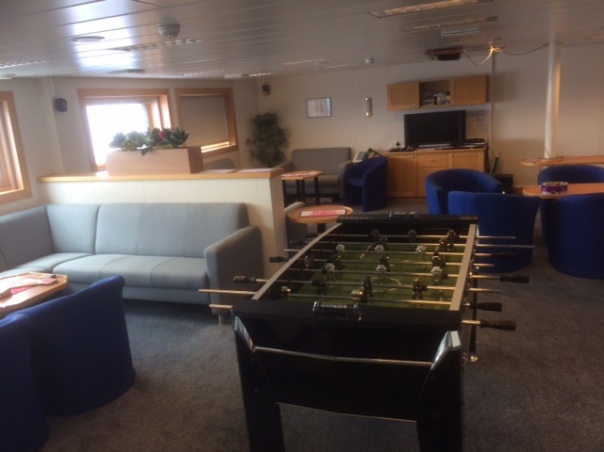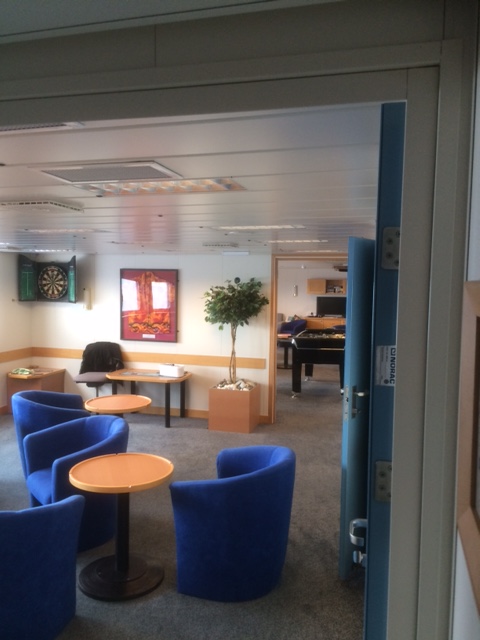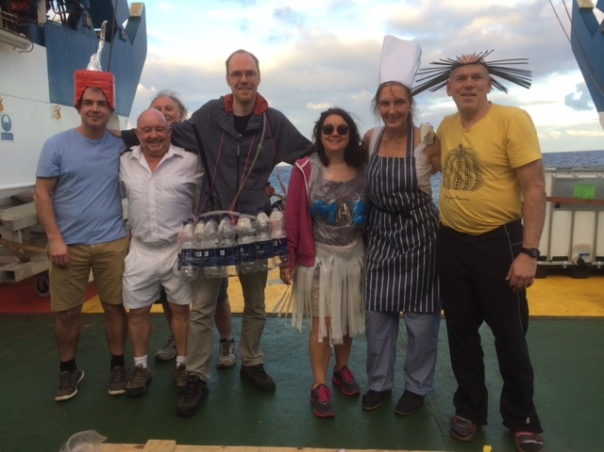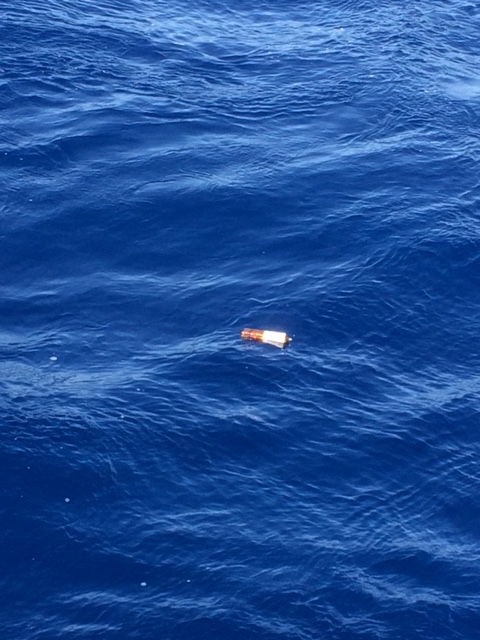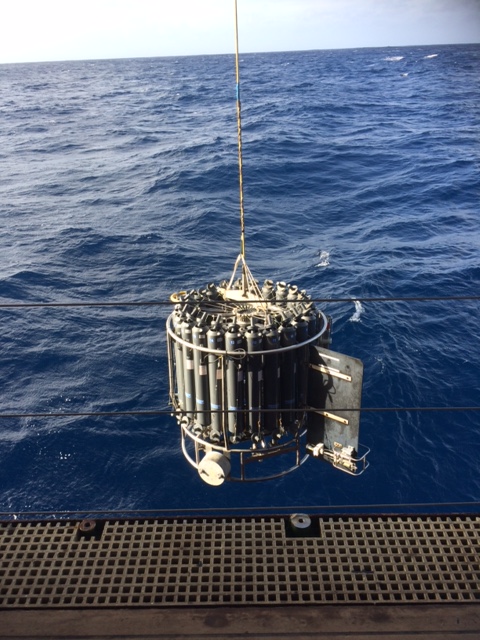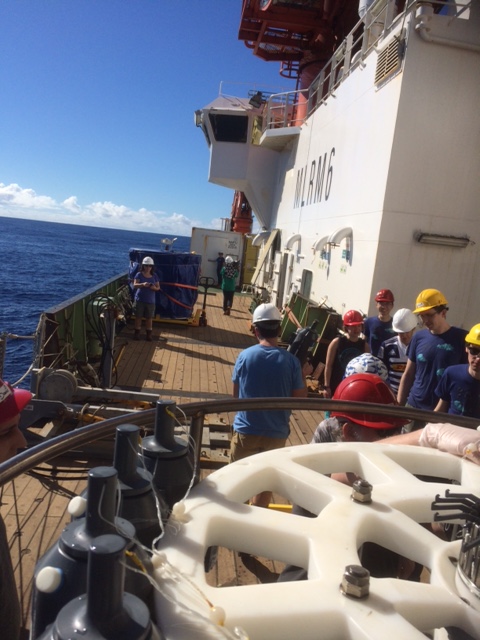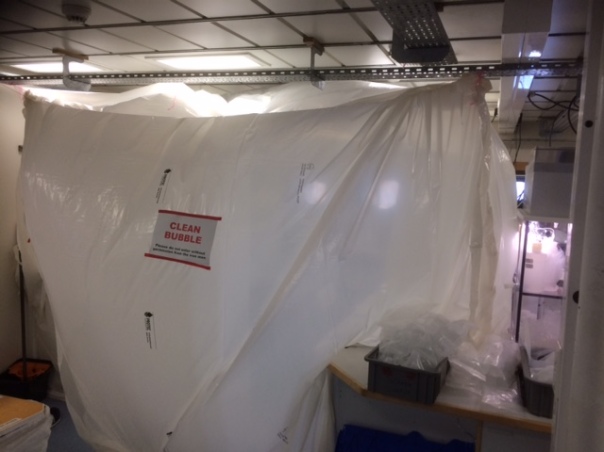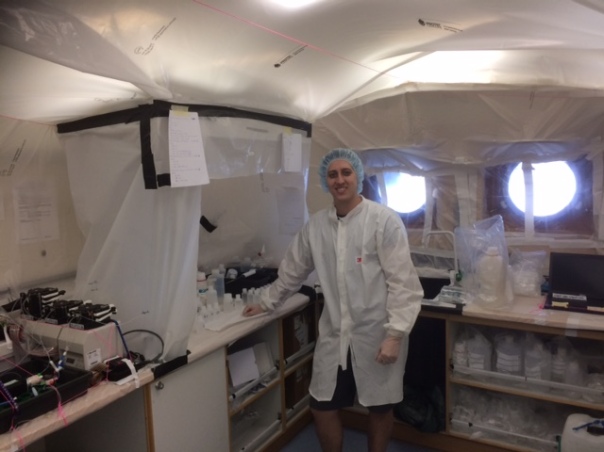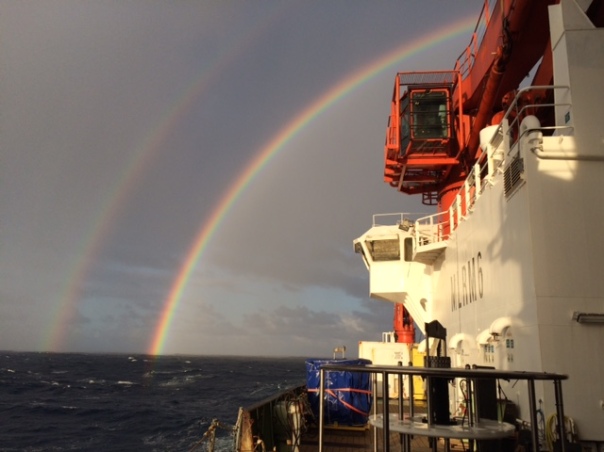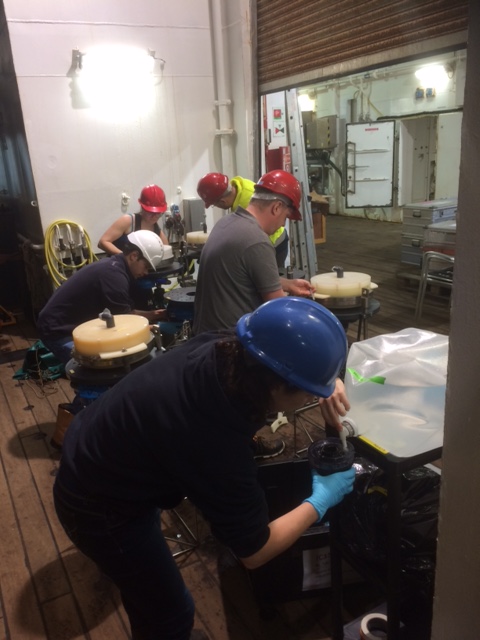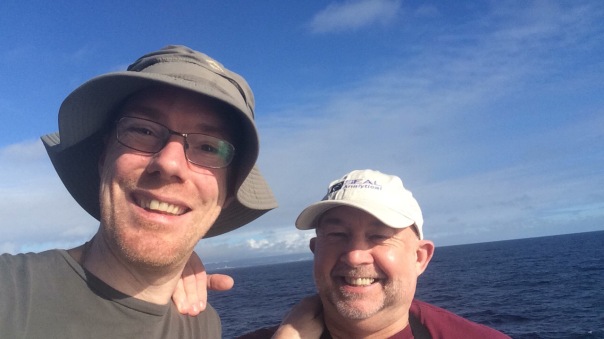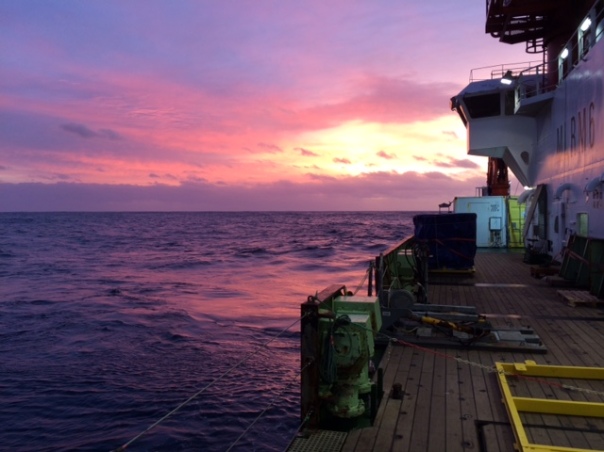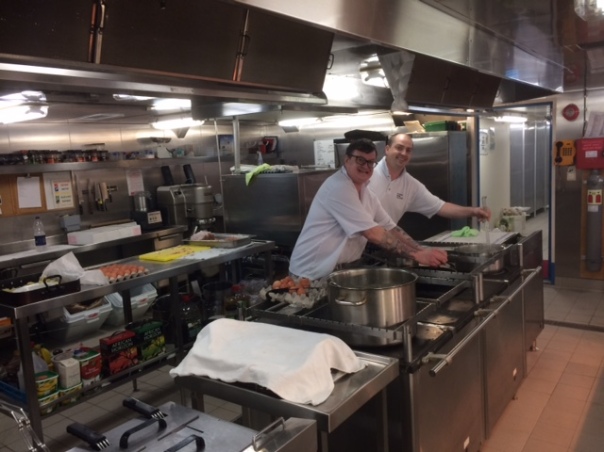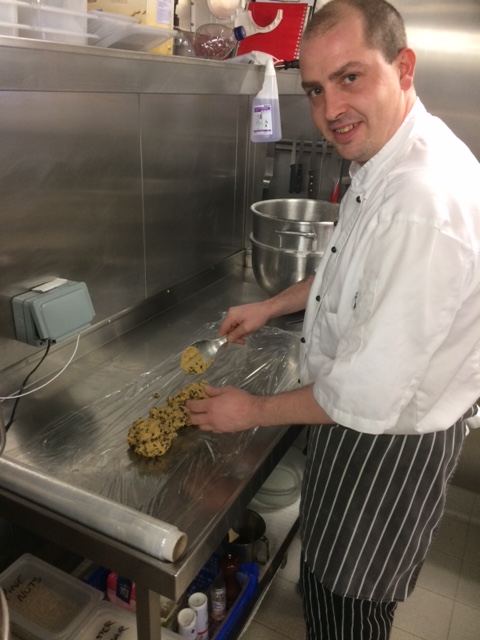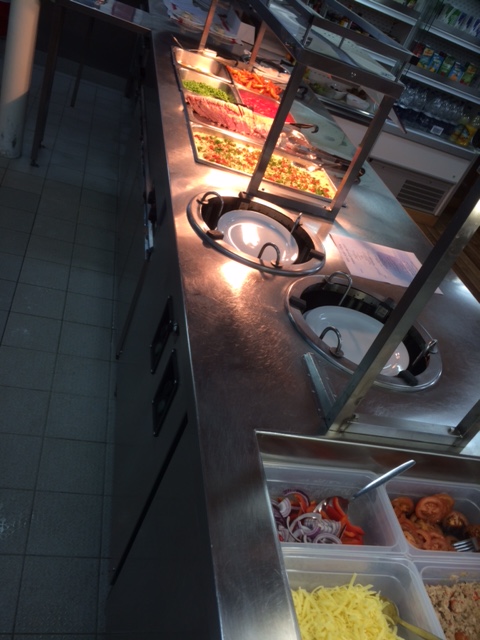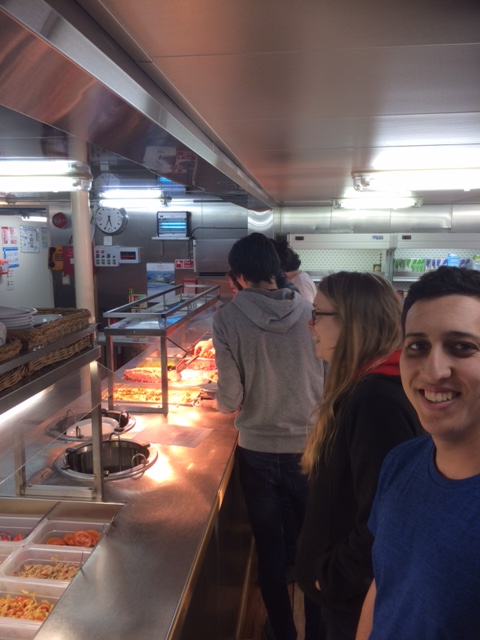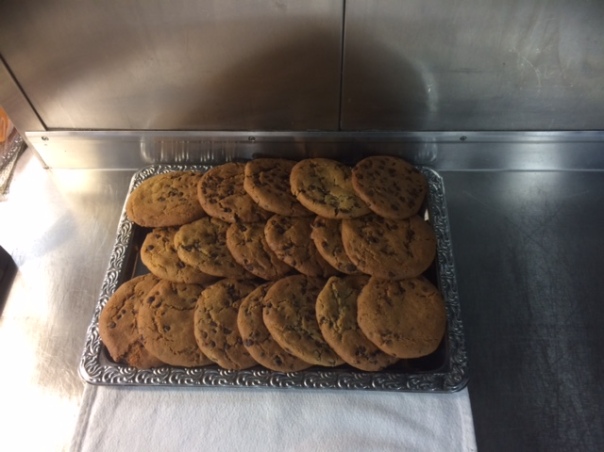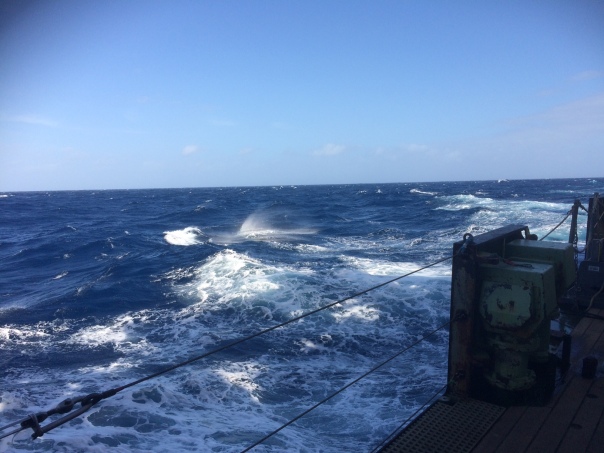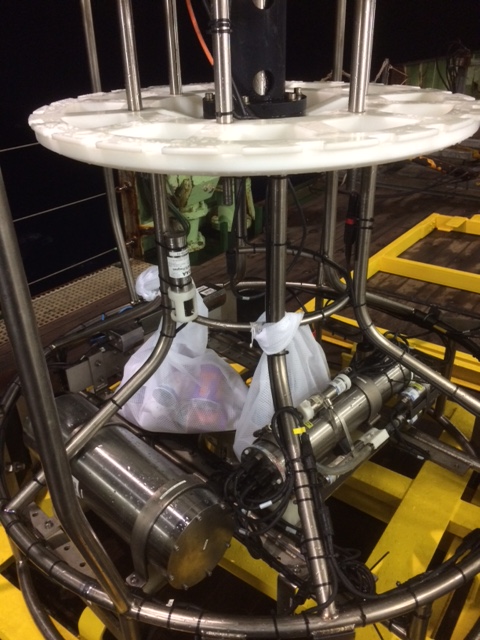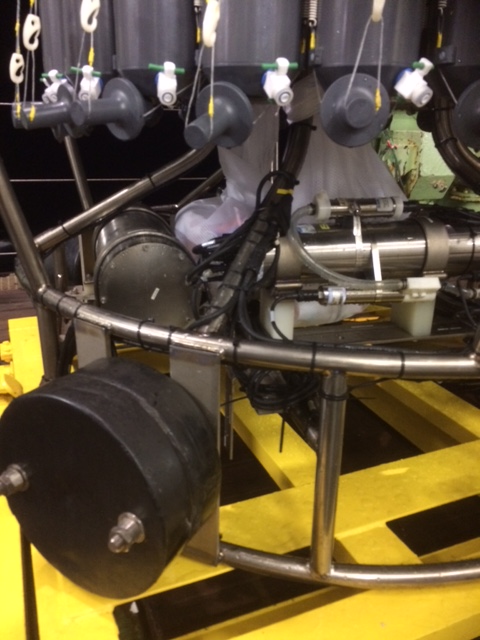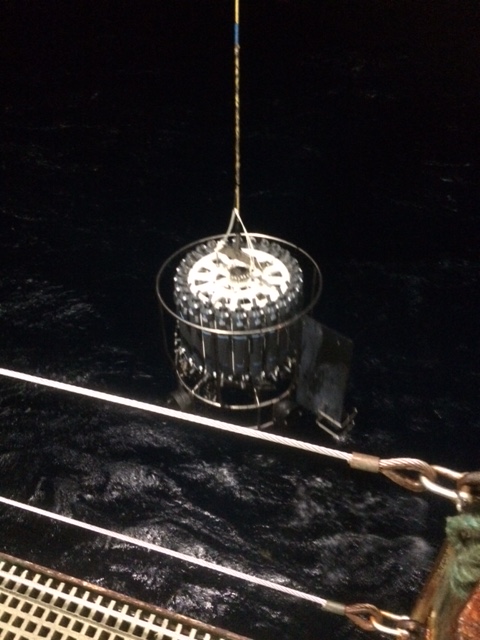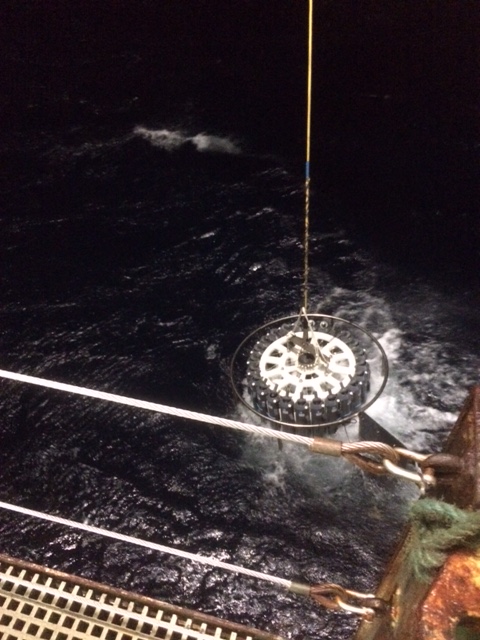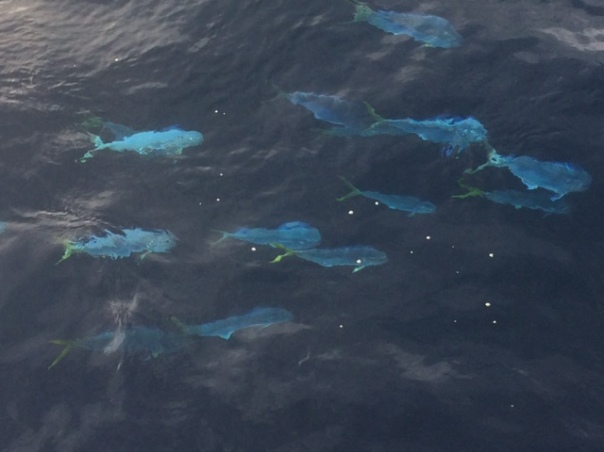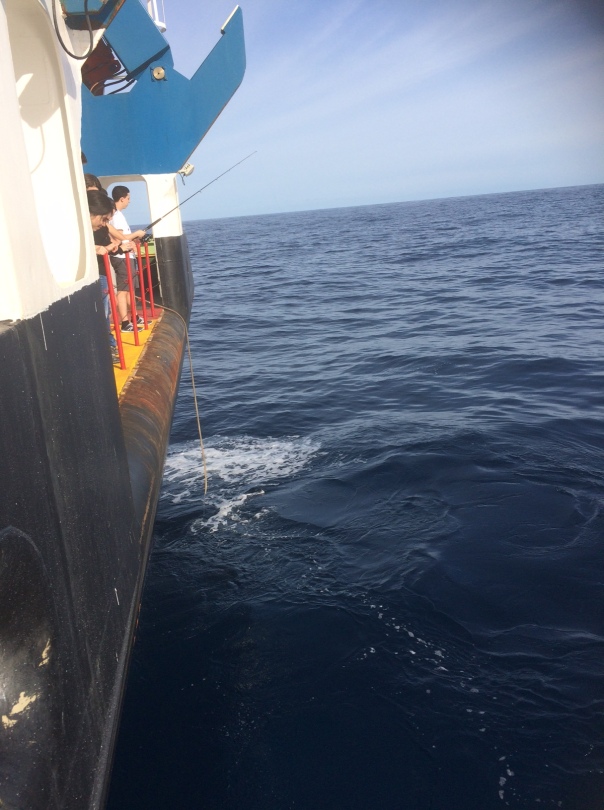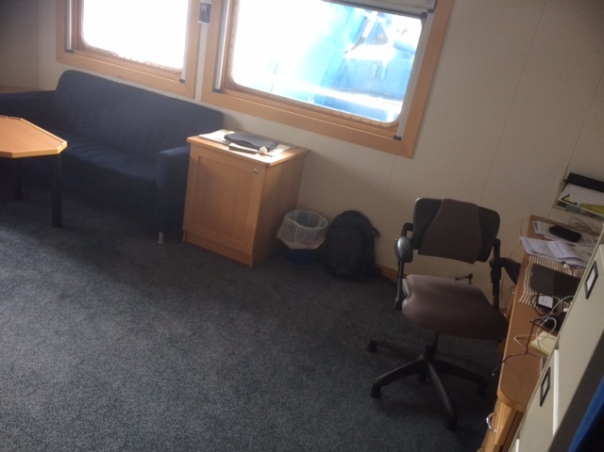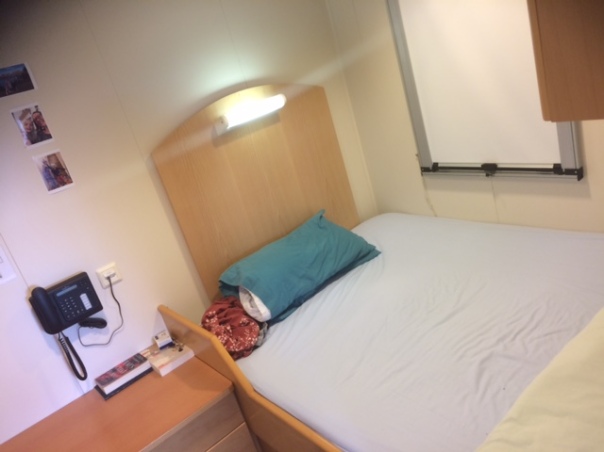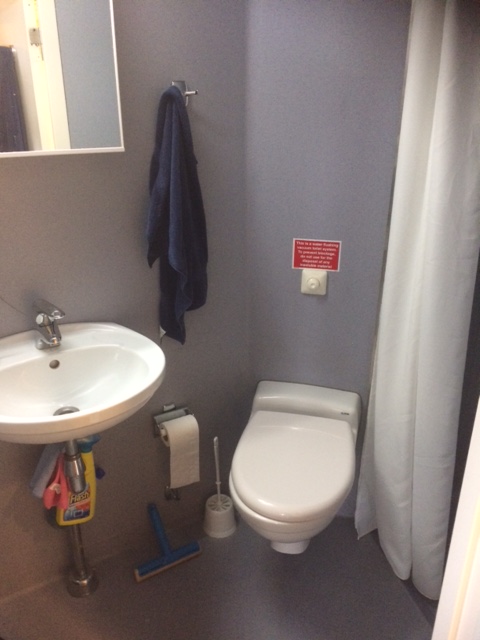Grace Edwards, Year 7: What do you on the ship all day? Answered by Dakota Gibbs, Southern Cross University, Australia
An average day will vary depending on what science is being carried out that day. We can sample the water at any time of day which means the scientists have to be ready to work any time. We usually find out the day before what times we need to be working. Once the sampler has been put in the water, scientists will have time to get bottles ready for sampling and pick the water depths they want to sample from. After the water sampler is back on deck, the scientists will take their specific samples. During our rest hours we play table football, darts, card games and board games, watch movies and get some sleep!
Lily Chorley, Year 7: How will you get to the volcanic vents?
We have a good idea of where the vents are by looking at the work of other scientists, so we can sail quite close to them. Then we have a couple of ways to make sure we find the stuff coming out of the vent, but my favourite is a “Tow-Yo”. This is where we have a few sensors on a really long 8000m cable and move it up and down like a yo-yo while we slowly move the ship forward, towing it along. The cable is long enough to go between Bridgewater High School and the middle of town, then all the way back again.
Daniel Hutton, Year 7: How cold is the Atlantic?
The temperature ranges from about 30 degrees Celsius at the surface to below zero in the deep ocean. Water moves to the Arctic or Antarctica, where it gets cold so becomes denser and sinks. It doesn’t freeze at 0 degrees Celsius because it has salt in it.
Jasmine Malem, Year 7: Do you have a lab on-board?
Yes! We have 3 labs on-board the ship, the wet lab, main lab and temperature controlled lab. The first one is where we take the water we need to do our experiments, and often involves washing bottles so we call it the wet lab. The main lab is where we do the experiments. The temperature controlled is where we do experiments that have to be kept at the same temperature.
George Hayman, Year 7: If you get nervous what do you tell yourself to boost your confidence?
For things like giving presentations I always just tell myself that its completely normal to be nervous, and some nerves can be a good thing. A teacher at The University of Manchester told me that he noticed some of his presentations weren’t as good as they used to be, and he realised it was because he stopped getting nervous before them. Often nerves are just there to make the feeling afterwards even better, so however nervous I am I say it’ll be worth it in the end.
Alex Eaves, Year 7: How bad are the tides or storms on your journey?
We don’t really notice the tides on the ship, but it can move water around in the ocean. It’s possible we could see some chemicals from a volcanic vent, then come back a few hours later and they’d have disappeared because the tides moved them. The Captain of the ship is quite good at avoiding storms, but we had some good lightning!
Holly Hesketh, Year 7: To drink on the ship do you have to drink seawater some how?
We bring enough drinking water on-board at the start of the trip to last for the whole journey. Then for showers and washing the ship has a water tank filled of 200 cubic meters of water, that’s like 200 baths full. We can drink that water if we need to. It can be refilled by heating up seawater so it evaporates into steam and leaves the salt behind, then we cool the steam down so it condenses back to water, but has none of the salt in it.
Michael Harrison, Year 8: What do plankton do?
Plankton have 2 main groups, phytoplankton and zooplankton. Phytoplankton take carbon dioxide and use it in photosynthesis. Zooplankton then eat the phytoplankton. Zooplankton themselves are then eaten by fish or mammals, or they die and sink, taking carbon to the bottom of the ocean. So really plankton keep all the life in the ocean alive, and take carbon from the atmosphere to the bottom of the ocean.
Andrea Campana, Year 8: Does the ocean get more interesting the deeper you go?
It depends who you ask and what you are interested in! The top of the ocean is full of life and changes a lot more over one year. The middle of the ocean is where stuff breaks down into chemicals that made it, then slowly moves back to the surface so that it can be used by biology again. The bottom of the ocean is where material is buried and volcanoes put chemicals back into the ocean.
Guy Holden, Year 8: What is the best part about your job?
The best part is knowing that I am working on something that no-one has ever done before. The work we are doing at sea right now will give us information to help answer questions we couldn’t answer before this trip.
Willow Nair, Year 8: What colour are phytoplankton?
Just like plants on land, phytoplankton use the sun’s energy in photosynthesis as their way to survive. To do this they need chlorophyll, which is what makes plants on land green, so phytoplankton are green too. We can even see them from space when enough phytoplankton grows, this is a photo from a NASA satellite where the green streaks are probably phytoplankton:
Isobel Green, Year 9: Do you directly work with, or have you heard of SAMS (Scottish Association of Marine Science)?
When I was studying for my Ocean Science degree at The University of Liverpool we had a class called the ‘Sea Practical’. This class involved a trip up to Oban, Scotland, where we went out on a SAMS research boat for three days and learnt all about the different ways to measure things like temperature, salinity and oxygen in the ocean.
Ethan McEndry, Year 9: What colour is the boat and will you see any dolphins?
The RRS James Cook is white and black with a little bit of red at the bottom. And yes! We saw this dolphin in the ocean after only one day at sea.
Jess Savage, Year 9: Do you keep a diary of what you do every day?
We have to keep a diary of everything we collect so its easy to keep track of all the water we have. We’ll be taking around 2000 samples of water while we are at sea so making sure we know where it came from and the depth it Is from is really important. We also have to make sure we know how much water we need for each experiment, just so we don’t run out.
Jonathan McLennan, Year 9: How long do you stay up for? What are your working hours?
As soon as we get to a place we want to collect water samples, which we call a station, the team for collecting those samples has to be awake. That can take six hours maximum, but usually takes around four hours depending on how deep the water is. Then another team takes over to process the samples once they are on the ship, which can be another few hours. So we don’t have set working hours, but work when we need to. We need at least ten hours a day for resting so we can work safely.
Abi Savage, Year 9: Have you got enough lifeboats?
Yep! There are a total of 54 people on-board the ship and we have a life boat on both the port (left) and starboard (right) side, each can hold 54 people, so have room for 108 people total in the lifeboats. There are inflatable life rafts around the ship as well for if we can’t get to the life boats.
Max Stanley, Year 10: Who is funding this research?
Most of the funding comes from the Natural Environmental Research Council (NERC). They get money from the government and other places to pay for us to use the ship and do some of the experiments on board.
Jordan Stone, Year 10: What is your favourite takeaway?
Fish and chips. Fortunately, we can have that on the ship every Friday (we don’t go fishing for it). There’s also curry Saturdays if you prefer that.
Mckenzie Gourlay, Year 10: How large is crew on-board?
There are 54 people on board. There are 6 sailors on deck, one of them is the bosun who is in charge of that team. We have 6 engineers. The purser, 2 chefs and 2 stewards who look after us. 1 electrician. 4 technicians who look after the scientific equipment. 4 deck officers, including the Captain, who drive the ship. 2 sensor technicians. So that’s 28 members of crew. Then we have a total of 26 scientists.
Emily Divall, Year 10. How much preparation goes into an investigation like this? Answered by Halley Spaid, University of Southern Mississippi.
Lots! I was invited to go on this cruise in April of last year to take water samples. Over the summer, we prepared our supplies we would be bringing. Coming from the US, I also had to get my passport and book plane tickets to make the trip myself in December. To go onto the ship, I had to have a special medical exam and take a course on sea survival.
Leyton Holden, Year 7. What is your favourite part of the world? Answered by Dr Amber Annett, University of Southampton.
My favourite place is Antarctica! I’m very lucky to have been there to do research five times, including during the winter. It seems very bright because there is so much snow and ice to reflect the light. Also, the penguins, whales and seals are amazing to see and are often very curious. You have to like the cold though!
Aidan Williams: Do Yeti Crabs have heat sensors to find hydrothermal vents because they’re blind? Will there be any tremors going on when the tectonic plates move near you? Answered by Prof Rachel Mills, Dean of the Faculty of Natural and Environment Sciences, University of Southampton.
Great questions from Aiden – we have only found Yeti crabs in the warm water surrounding the hot vents and it certainly seems they need this warmth to survive. They farm tiny microbes on the hairs on their body and feed off these. Because it is pitch black at these depths they don’t need to be able to see, rather they need to be able to stay near the warm waters so we think they have evolved to survive in these extreme conditions.
Onto your second question – tremors go on all the time at the boundaries of tectonic plates but most of these tremors are too small for us to feel and too small for our equipment to pick up remotely. Big tremors happen less frequently but certainly do occur from time to time as the plates judder apart along the ridge. In the Atlantic the plates are separating at about 10 mm each year so this movement will lead to small tremors and faulting and fissuring of the seafloor as well as of course hot rock seeping up to the seafloor and forming new ocean crust.
Hannah Brindle, Year 10: Are any of the volcanoes likely to erupt along the ridge near where you will be researching? Answered by Prof Rachel Mills, Dean of the Faculty of Natural and Environment Sciences, University of Southampton.
The Atlantic is very quiet in volcano terms compared with the Pacific Ring of Fire. But all of the islands along the Mid-Atlantic Ridge are volcanic and volcanoes on Iceland regularly erupt under the ice as we know. The Azores, Canaries, Ascension, Gough Island are all dormant volcanoes and have been known to erupt in the past. As we get closer to the Caribbean then there is a higher chance of volcanic eruptions and islands such as Montserrat have been highly active over the last decades and the Volcanic Observatory on the island has a great website you can check out.
Tom Switch, Year 8: If the moon wasn’t there would the oceans be flat? Answered by Katherine Turner, University of Liverpool.
We see differences in sea level for lots of different reasons. Winds blowing over the ocean pile up water in some places and take water away from others; the sea level in the middle of the North Atlantic is a few metres higher than it is closer to the coast. And there are other tides as well, not just those caused by the moon! The sun and planets like Jupiter are large enough to create their own (small) tides.
Harleigh Hulme, Year 8: What sort of chemicals are in the ocean? Answered by Sean Selzer, University of Oxford.
This is actually why I decided to study the oceans and is basically why we go and measure concentrations of chemicals in the ocean. Almost every element on the periodic table can be found in the ocean, there is loads of some and incredibly little of others. All life in the ocean depends on the ocean’s chemical make-up. Right now the extra carbon dioxide that humans pump into the atmosphere dissolves into the ocean waters and makes it a tiny bit more acidic. This makes it more difficult for corals and small plankton to form their shells or skeletons out of calcium carbonate and damages coral reefs.
Kaya Okten, Year 8: Is the ocean floor where you are smooth? Answered by Dr Alastair Lough, University of Southampton
I can see why you might expect it to be smooth but its quite the opposite its actually very rough. The vents sit on the Mid Ocean Ridge which is like a mountain range that runs up and down the seafloor of the Atlantic Ocean. The vents look like sharp spires several meters tall that sit within the valleys of these Mountains.
Mae Haley, Year 7: How many people are in one bedroom? Answered by Dr Carl Spingys, University of Southampton
On this ship we are lucky as we all have a cabin, the word for bedrooms on a ship, to ourselves. This is not always the case. On my last cruise we were on a different ship, RRS James Clarke Ross, and I shared a cabin with two other people for eight weeks. Fortunately we were working at different times of day so didn’t disturb each others sleep too much!
